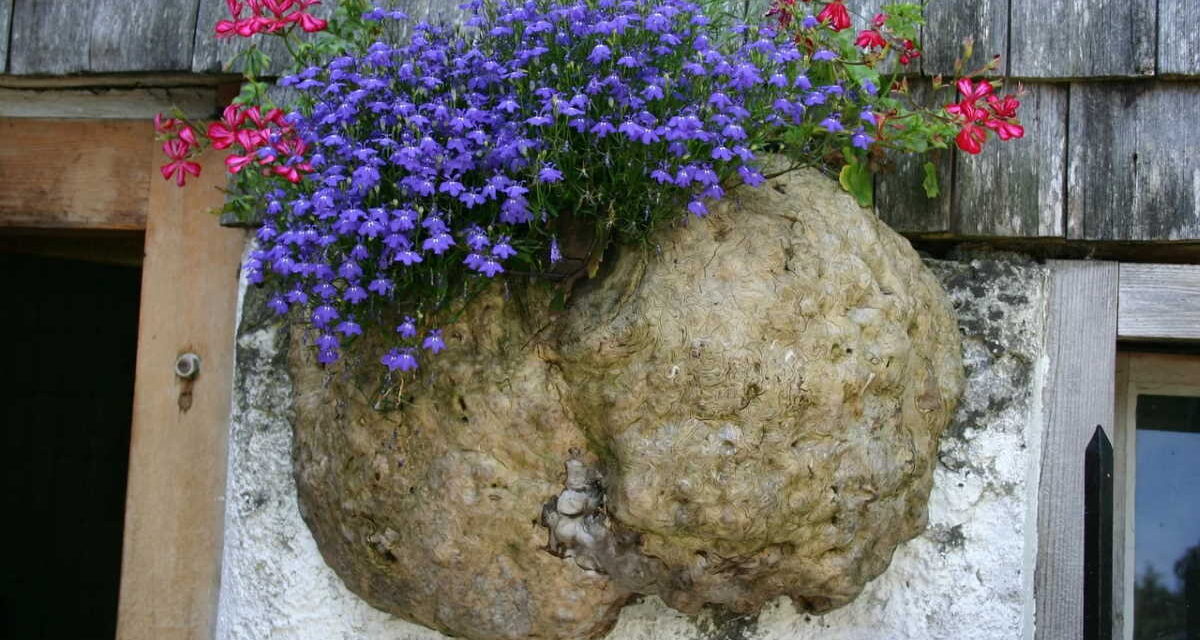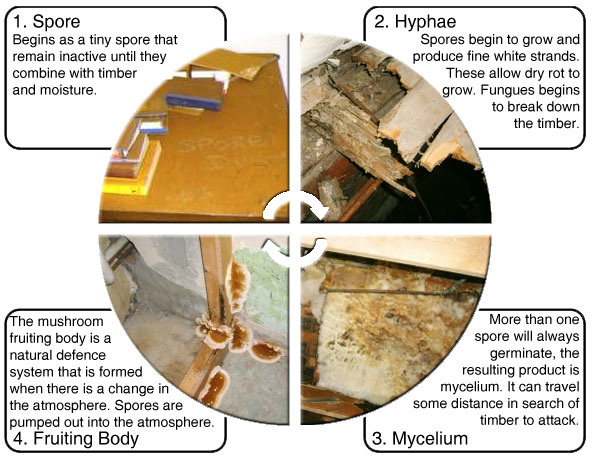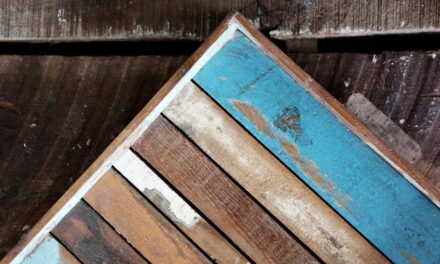Dry rot is a condition that can have seriously damaging effects on timbers in a home. Dry rot is a fungus that grows on, and breaks down timber. Despite its name, dry rot needs an environment that is high in moisture to grow. Leaking pipes, broken gutters, rain-water seeping through the roof and drainage issues are the most common sources of water ingress that lead to dry rot.
How does dry rot occur?
Dry rot spores are fairly common and exist in most properties; in the majority cases they are entirely harmless. It is only when provided with adequate moisture that dry rot spores will germinate and grow. It is when the dry rot fungus begins to grow en-masse that it becomes dangerous to a property’s structural integrity.
What does dry rot look like?
Dry rot’s appearance depends entirely upon how far along its life cycle is. The spores are pretty much invisible, but given the right conditions they will begin to germinate and from thin white strands known as hyphae. Hyphae are your first warning signs, and if you notice any, you should inspect the surrounding area for any sources of water ingress. If you can nip the dry rot in the bud at this stage then damage to your timber should be minimal.
As hyphae grow they will form a white, fluffy, cotton wool-like mass known as Mycelium. Mycelium is capable of spreading over quite a distance to find moisture-rich timber on which to grow. By this point a specialist dry rot treatment would be required to combat the growth.
The final stage of the dry rot life cycle is the fruiting body, a brown mushroom-like mass. The dry rot fungus creates these fruiting bodies when conditions become unsuitable for further growth i.e. levels of moisture have dipped or the timber has become too degraded for the fungus to grow on. The function of the fruiting bodies is to pump spores out into the surrounding air to kick-start future growths.
It is likely that dry rot has caused considerable timber degradation by the time fruiting bodies are noticed. The only option at this stage would be removal and replacement of affected timbers.
How can dry rot be prevented?
It is important to make sure your home is both adequately waterproof but also well ventilated enough to prevent high humidity.
If you can see wet patches in the brickwork outside your home, then it is likely you have a water management issue somewhere, and any timber in these areas should be inspected for the tell tale signs of dry rot. It is also wise to regularly inspect timbers in areas of your home that are likely to come into contact with exposed or damaged water pipes i.e. the kitchen, bathroom, attic or basement.
In addition, having a water powered sump pump in your basement (cellar) will eliminate water from the area, getting rid of the issue of dry rot.
Dry rot treatment
If dry rot is only at the hyphlae stage it may only be necessary to treat the timber with a fungicide whilst repairing the source of moisture. If dry rot has reached the mycelium and fruit bodying stages then professional assistance will likely be required to kill the fungus and replace rotten timbers with new treated timbers.
Hidden dry rot
Dry rot can often hide in timbers that are concealed behind plasterboard and other wall coverings. It is important that hidden dry rot is not ignored. A professional surveyor will be able to figure out where dry rot is hiding in a property by using equipment such as thermal imaging cameras or a boroscope. Of course, a confident DIYer could remove any wall coverings to investigate this for themselves, but this would be a case of weighing up the cost and time of removing and replacing entire sections of wall.
Stopping the rot
Dry rot is a serious problem but, by being able to identify the early signs of dry rot, anyone can “stop the rot” before a minor treatment and repair becomes a major timber replacement job.







Hi Anne, dry rot is a threat. And the worst thing about them is that they keep on growing without you even noticing them. And once they damage the base of the wood, it is hardly of any use to try to prevent them. Thanks for sharing the details of dry rot with us.
True. If you can see it straight away, you’re most likely to do something about it. However, with things like dry rot, they can get out of control before you even notice something’s wrong.
I am not good with this sort of thing and depend on my handyman for what needs to get done.
Fantastic post!
Thanks, Icy. Making this identification can be quite difficult indeed. If you have someone who can do it for you, why not, right? In our house I’m usually the handyman 🙂